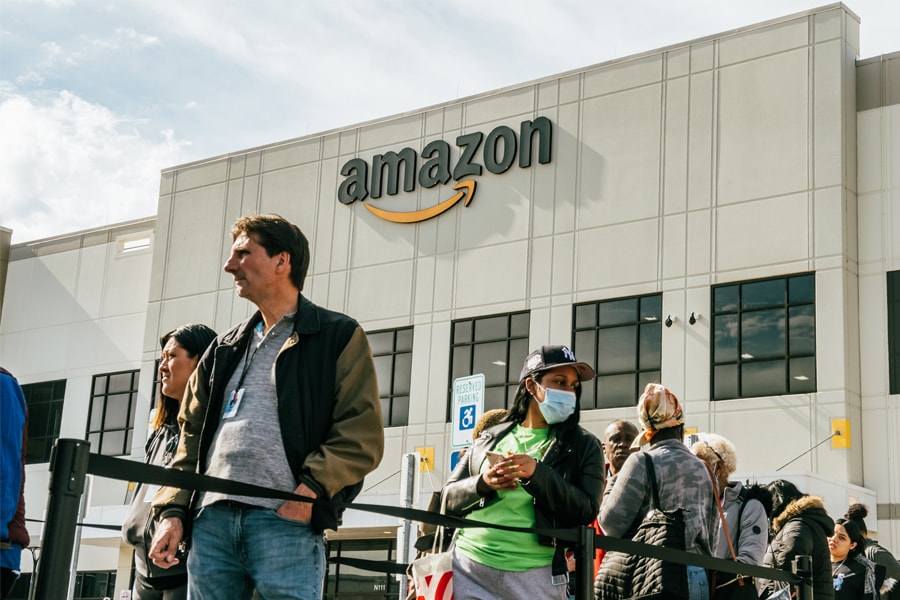
Amazon workers who won a union their way are inspiring change in labour movements
Unlike traditional unions, the Amazon Labor Union relied almost entirely on current and former workers rather than professional organizers; for financing, it turned to GoFundMe; the word was spread in a break room and at low-key barbecues
 Employees in line to vote on unionization, at Amazon’s JFK8 fulfillment center on Staten Island, March 25, 2022. After the stunning victory at Amazon by a little-known independent union that didn’t exist 18 months ago, organized labor has begun to ask itself: Does the labor movement need to get more disorganized? (DeSean McClinton-Holland/The New York Times)
Employees in line to vote on unionization, at Amazon’s JFK8 fulfillment center on Staten Island, March 25, 2022. After the stunning victory at Amazon by a little-known independent union that didn’t exist 18 months ago, organized labor has begun to ask itself: Does the labor movement need to get more disorganized? (DeSean McClinton-Holland/The New York Times)
After the stunning victory at Amazon by a little-known independent union that didn’t exist 18 months ago, organized labor has begun to ask itself an increasingly pressing question: Does the labor movement need to get more disorganized?
Unlike traditional unions, the Amazon Labor Union relied almost entirely on current and former workers rather than professional organizers in its campaign at a warehouse on Staten Island in New York City. For financing, it turned to GoFundMe appeals rather than union coffers built from the dues of existing members. It spread the word in a break room and at low-key barbecues outside the warehouse.
In the end, the approach succeeded where far bigger, wealthier and more established unions have repeatedly fallen short.
“It’s sending a wake-up call to the rest of the labor movement,” said Mark Dimondstein, president of the American Postal Workers Union. “We have to be homegrown — we have to be driven by workers — to give ourselves the best chance.”
The success at Amazon comes on the heels of worker-driven initiatives in a variety of other industries. In 2018, rank-and-file public school teachers in states like West Virginia and Arizona used social media to plan a series of walkouts, setting in motion one of the largest labor actions in recent decades and forcing union leaders to embrace their tactics.
©2019 New York Times News Service







